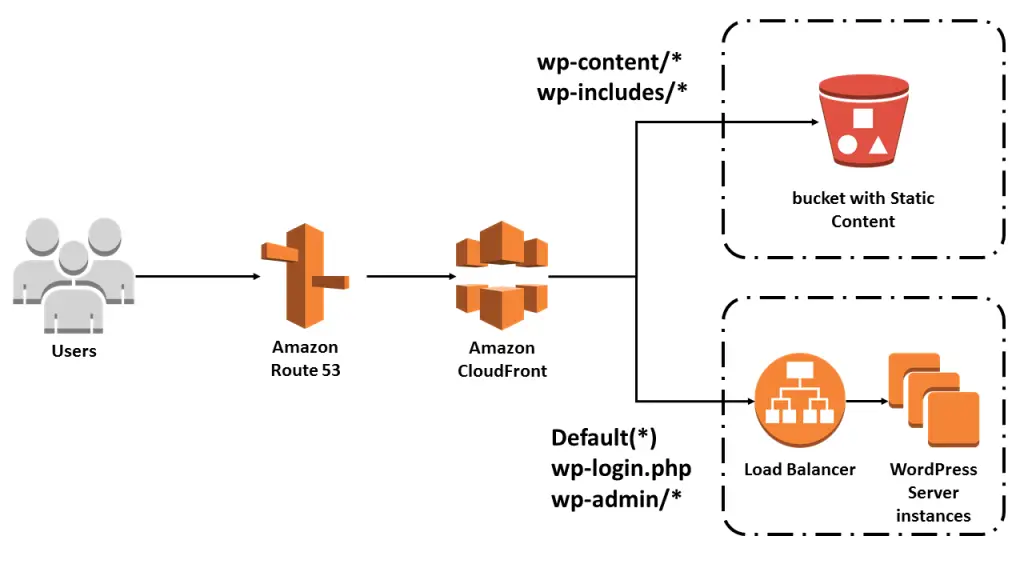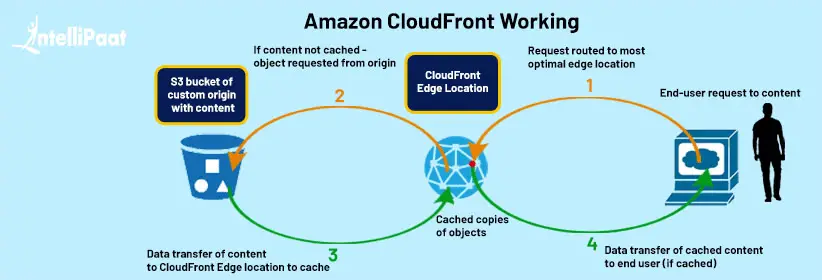Amazon Cloudfront: The Key to Amazon’s Seamless Content Distribution

Amazon Cloudfront is a content delivery network (CDN) service provided by Amazon Web Services (AWS). It is designed to deliver content quickly and reliably to users around the world. Cloudfront works by caching content on servers in multiple locations, so that users can access it from the closest server. This reduces latency and improves the performance of web applications and websites.

How Cloudfront Works

Cloudfront works by creating a global network of edge locations. These edge locations are strategically placed in different parts of the world, so that users can access content from the closest server. When a user requests content from a website or application that uses Cloudfront, the request is routed to the nearest edge location. The edge location then checks to see if the content is cached locally. If it is, the content is delivered to the user directly from the edge location. If the content is not cached locally, the edge location will fetch it from the origin server (e.g., your S3 bucket). Once the content is cached locally, it can be delivered to users quickly and reliably.
Benefits of Using Cloudfront
There are many benefits to using Cloudfront, including:
- Improved performance: Cloudfront reduces latency and improves the performance of web applications and websites. This is because content is cached on servers in multiple locations, so that users can access it from the closest server.
- Increased reliability: Cloudfront is a reliable CDN that can handle high traffic volumes. This means that your website or application will be available to users even during peak usage times.
- Reduced costs: Cloudfront can help you reduce your hosting costs. This is because Cloudfront is a pay-as-you-go service, so you only pay for the bandwidth that you use.
- Global reach: Cloudfront has a global network of edge locations, so you can deliver content to users all over the world. This makes Cloudfront an ideal solution for businesses that have a global audience.
How to Use Cloudfront
To use Cloudfront, you will need to create a Cloudfront distribution. A distribution is a configuration that defines where your content will be cached and how it will be delivered to users. When you create a distribution, you will need to specify the following information:
- Distribution name: The name of your distribution.
- Origin server: The URL of the server where your content is stored.
- Edge locations: The locations where you want your content to be cached.
- Default cache behavior: The default settings for how your content will be cached.
Once you have created a distribution, you will need to configure your website or application to use Cloudfront. This can be done by changing the DNS settings for your domain or by using a Cloudfront plugin.
Conclusion
Cloudfront is a powerful CDN service that can help you improve the performance, reliability, and cost-effectiveness of your web applications and websites. If you are looking for a way to deliver content quickly and reliably to users around the world, then Cloudfront is the perfect solution for you.## Amazon Cloudfront: Key To Amazon’s Seamless Content Distribution
Executive Summary
Amazon CloudFront is a global content delivery network (CDN) that allows businesses to deliver content to end users with high performance, low latency, and increased security. This article will provide an overview of CloudFront, its key features, and benefits.
Introduction
In today’s digital world, delivering content quickly and efficiently is essential for businesses of all sizes. Amazon CloudFront is a cost-effective and scalable solution that can help businesses achieve this goal.
FAQs
1. What is a Content Delivery Network (CDN)?
A CDN is a network of servers distributed across the globe that caches content and delivers it to end users from the closest possible location. This helps reduce latency and improve the user experience.
2. How does CloudFront work?
CloudFront uses a global network of edge locations to cache content closer to end users. When a user requests content, it is served from the nearest edge location, reducing the time it takes for the content to reach the user.
3. What are the benefits of using CloudFront?
CloudFront provides several benefits, including:
- Improved performance: Reduced latency and faster load times for end users.
- Reduced costs: Reduced bandwidth costs by caching content closer to users.
- Increased security: Enhanced protection against DDoS attacks and other security threats.
Key Features and Benefits
Global Network
CloudFront has a global network of over 200 edge locations in over 100 countries. This wide distribution ensures that content is delivered to end users from the closest possible location, minimizing latency.
Cache Control
CloudFront allows you to manage how and when content is cached. You can set caching policies based on file type, location, and other criteria to optimize performance and reduce costs.
Security
CloudFront provides multiple layers of security, including DDoS protection, SSL/TLS encryption, and access control lists. This helps protect your content and ensure its secure delivery to end users.
Scalability and Reliability
CloudFront is a highly scalable and reliable service that can handle large volumes of traffic. It automatically adjusts to demand and ensures that content is delivered with consistent performance, even during peak periods.
Cost-Effectiveness
CloudFront is a cost-effective solution that allows businesses to pay only for the services they use. There are no upfront costs or long-term contracts, making it easy to budget and scale usage as needed.
Conclusion
Amazon CloudFront is a powerful CDN that provides businesses with a seamless and cost-effective way to deliver content to end users. Its global network, advanced caching capabilities, security features, and scalability make it an essential tool for businesses looking to improve performance, reduce costs, and enhance security.
Keyword Tags
- Amazon CloudFront
- Content Delivery Network (CDN)
- Content Distribution
- Performance Optimization
- Cost Reduction
